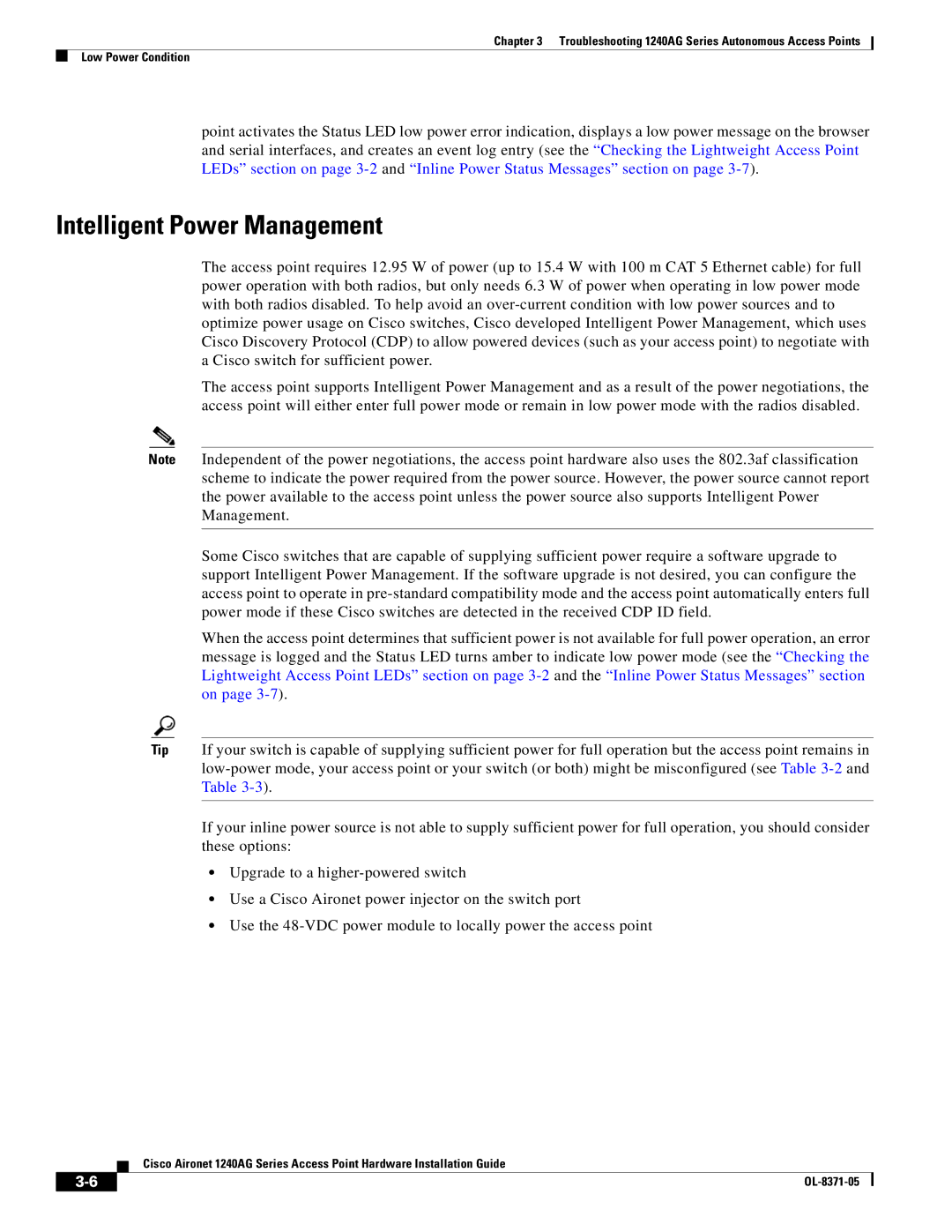
Chapter 3 Troubleshooting 1240AG Series Autonomous Access Points
Low Power Condition
point activates the Status LED low power error indication, displays a low power message on the browser and serial interfaces, and creates an event log entry (see the “Checking the Lightweight Access Point LEDs” section on page
Intelligent Power Management
The access point requires 12.95 W of power (up to 15.4 W with 100 m CAT 5 Ethernet cable) for full power operation with both radios, but only needs 6.3 W of power when operating in low power mode with both radios disabled. To help avoid an
The access point supports Intelligent Power Management and as a result of the power negotiations, the access point will either enter full power mode or remain in low power mode with the radios disabled.
Note Independent of the power negotiations, the access point hardware also uses the 802.3af classification scheme to indicate the power required from the power source. However, the power source cannot report the power available to the access point unless the power source also supports Intelligent Power Management.
Some Cisco switches that are capable of supplying sufficient power require a software upgrade to support Intelligent Power Management. If the software upgrade is not desired, you can configure the access point to operate in
When the access point determines that sufficient power is not available for full power operation, an error message is logged and the Status LED turns amber to indicate low power mode (see the “Checking the Lightweight Access Point LEDs” section on page
Tip If your switch is capable of supplying sufficient power for full operation but the access point remains in
If your inline power source is not able to supply sufficient power for full operation, you should consider these options:
•Upgrade to a
•Use a Cisco Aironet power injector on the switch port
•Use the
Cisco Aironet 1240AG Series Access Point Hardware Installation Guide
|
| |
|
